
Your dog refuses to fetch and shows no interest in dog chew toys. Squeaky toys don’t even get a second look. Does this sound familiar? If your dog doesn’t like toys, you may be wondering why and what you can do to make their toys more exciting.
There are two common reasons that your dog may not be interested in his toys:
1. You haven’t found the right toys yet.
2. He simply doesn’t understand what he’s supposed to do with them.
These two are often both true but don’t worry, this toy guide will help you find the right dog toys and offer some simple tricks to help them learn to love their toys.
5 Benefits of Dog Toys
Start by asking yourself why your dog should have toys. Toys can be fun, but they can also have a practical purpose. Part of playtime is building healthy routines and keeping your pet mentally and physically stimulated.
My dog doesn't like toys
If you include playtime into your dog’s daily routine, you will find it much easier to modify or add new games and toy selection in the future.
Let’s take a look at the potential benefits of dog toys.
1. Boredom
.webp?width=792&height=528&name=bored-dog%20(1).webp)
This one might seem obvious, but bored dogs tend to act out in other ways, sometimes even destructively. My dog doesn't like toys. My dog get bored but won't play with toys. Showing your dog how to play, both with you and alone, can help to keep them mentally stimulated.
Chewing on furniture, digging through the garbage, and begging for attention can all be signs that your dog is acting out because he’s frustrated that he doesn't have anything else to do.
Offering a regular variety of toys, and especially games that will mentally engage them, can reduce many unwanted behaviours that are caused by boredom.
2. Anxiety
Anxiety is very common in dogs. The signs of dog anxiety can be similar to the symptoms of boredom but can also include fearful reactions, whining, barking, and even self-harm.
One way to reduce anxiety is to give your dog something to do. The mental and physical stimulation from toys can help them feel calmer by giving them something safe and productive to focus on.
If your dog shows little interest in toys, then it's important that you are sticking to toys and games that allow you to play with your dog. The extra motivation and excitement from you can help build your bond and a healthier routine.
3. Exercise
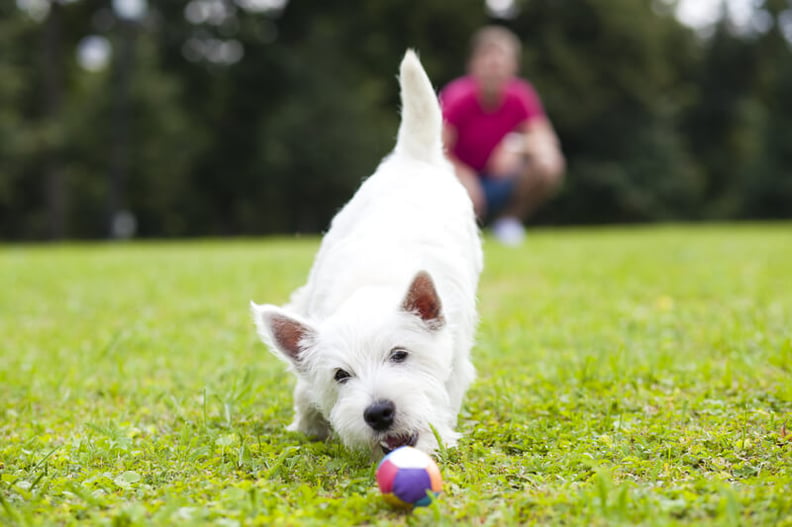
Diet and exercise are the foundation of a healthy pet, so keeping them physically active can reduce the risk of health issues like obesity and mobility problems.
Whether you are trying to keep up with an active dog or are trying to encourage your lazy mutt to get moving, toys are a great outlet. Start small, especially with less active dogs, but make sure you build a consistent and fun routine.
4. Dental Health
Using toys to work their jaws and massage their gums is an important part of their dental health. Chewing can strengthen their jaw muscles and aid in removing bacteria build-up on their teeth.
Chewing is a low-energy level activity, and there are many toys to accommodate the different chewing styles of all ages and types of dogs. Always monitor your pup while chewing to avoid choking or ingestion disasters.
5. Learning
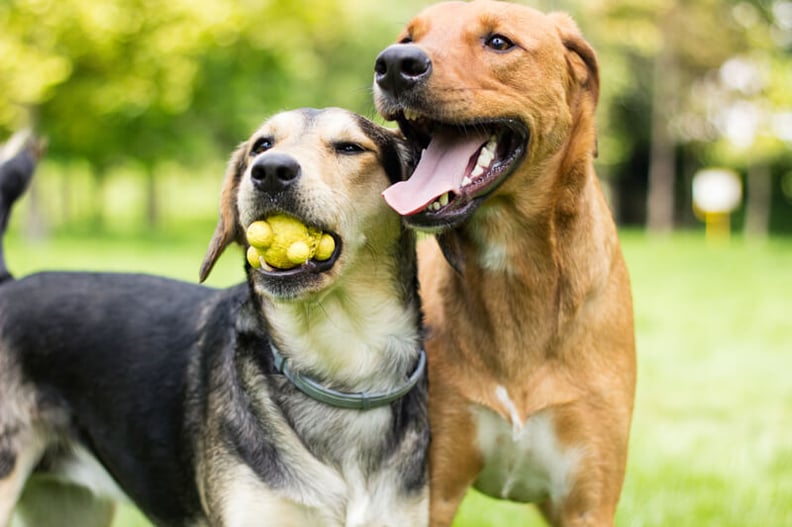
Dogs continue to learn from their critical adolescent stages through their most delicate senior years. They explore with their mouths, so toys are great ways to get them experience their environment and to interact with you and other animals.
Toys can help to teach good behaviours, learn new skills, and even maintain cognitive function as they age. This can include both solo playtime and group play.
Your dog will learn to master toys in time, so make sure you have a few varieties of toys to rotate through. This will prevent your dog from get bored with their toys and can also extend the life of the new toys by limiting consistent wear and tear.
Types of Dog Toys
If we put all the benefits into perspective, toys seem like a pretty vital part of your dog's health, right? But how do you find the right toy preferences for your dog?
Let’s take a look at the different types of toys that might keep your dog's interest and encourage more playtime:
Fetch & Toss
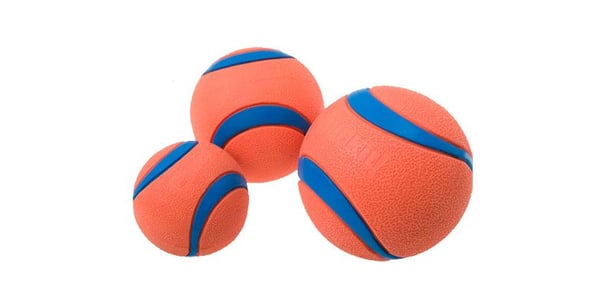
Fetch is one of the oldest and most popular games for dogs. It allows them to exercise and explore and is also a great way to get bond with your dog.
If you’ve ever tossed a ball, only to have your dog just stare at it (and then you, while you walk over to fetch it yourself), then you may be skeptical of trying this one-sided game again.
That's understandable, but don’t rule fetch out completely. It may take some training, but the game of fetch can be taught. It is ideal for both mental and physical activity and can be adapted to other games and toys to keep the game fresh and fun.
Tips for Teaching Your Dog to Fetch
- Start by tossing small treats across the room. When your dog goes to retrieve the treat, make sure you give loads of praise. If your dog is food motivated, then they will likely look back to you to see if there’s more where that treat came from.
- Call your dog back to your side, and reward them when they come. Do this repeatedly.
- Once your dog gets the point, place or toss the ball on the other side of the room and throw a treat near it (the closer you can get to the toy, the better). If your dog touches the toy when they run to retrieve the treat, make sure you react with lots of praise.
- Next, take a small dab of pet-safe peanut butter, salmon oil, or something else tasty and spreadable, and put it on the ball. Just enough to get the flavour and scent; you don’t want to end up with a sticky floor.
- Let your dog sniff the ball and then toss it. Most dogs will follow their noses and go after the ball. Encourage your dog to pick up the ball, and praise them when they do. Always call them back to you and reward them for a job well done.
- Eventually, you will be able to phase out the treats, and your dog will be a fetch pro. You can start moving to larger areas, like the yard and even the park.
If your dog may knows the game but gets bored of it quickly, try switching up the toys that you use. Frisbees, footballs, and even plush toys can be an easy way to spruce up an old classic.
Looking for the best fetch toys? Check out our 50 Best Dog Toys to find the toy that will get your dog moving.
Chew Toys
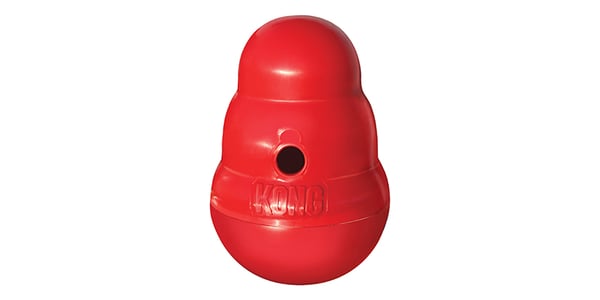
If your dog isn’t interested in chewing, then you may be offering the wrong kind of chew toy. We want to stretch every penny and find a durable toy that will last forever, but it may not be very appealing to your pup.
Try different textures, flavours, and scents to appeal to your dog's natural chewing instincts. They may get bored or discouraged if the toy is too hard or too boring.
Tips for Encouraging Your Dog to Chew
- Look for durable plush toys or softer rubber toys that will still be good for chewing but won’t be hard as a rock. This can encourage your dog positive chewing habits and allow you to slowly work up to tougher toys.
- You can also opt for toys that can be stuffed or ones designed to hold treats. This will give them a reason to keep chewing on a denser toy and will still offer the many dental benefits of a chews toy.
- Start chew sessions with an interactive game, like tug-o-war or hide-and-seek. Get them excited by being excited yourself. When your mini-game is over, you can pass off the toy to your dog for some solo playtime.
- Another option is to look for flavoured chew toys. Beef-infused nylon bones, like Tasty Bone, might be just the encouragement dogs need to start chomping down.
Puzzle Toys
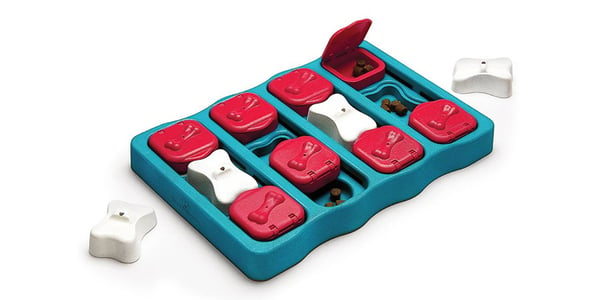
If your dog may need a low-impact game or prefers a tasty reward for their efforts, then puzzle games are right up their alley. These toys combine the boredom-busting power of a puzzle and the delicious scent and flavour of their favourite snacks.
These are ideal for indoor play and can help to combat anxiety and destructive behaviours. They are also great for puppies who are learning to master their paw-eye coordination.
Tips for Introducing Dog Puzzle Toys
- This one almost dog needs no introduction. Each puzzle toy will be a bit different, but the goal is the same: Find the treat.
- Start small and simple and work your way up to a more challenging puzzle to prevent your dog from losing interest once they've unlocked the secret to getting the treats quickly.
- Playing with the puzzle toy together can offer much-needed encouragement and direction. It’s a great way to get them started, not to mention a great bonding experience with your pet. Keep your camera ready. First attempts at puppy puzzle toys are always entertaining.
- Many different toys can be a puzzle or mind games. Check out 13 Ways to Use a Kong to get some inspiration for how you can repurpose some of the neglected toys that are laying around the house.

Find more ways to keep your dog mentally stimulated in Bored Dogs: Symptoms & Solutions for Dog Boredom. Learn how to recognize boredom in your pet and tons of fun toys and games that can liven up their regular routine.
Snuggle Toys

For some dogs, a toy is more than a tool; it’s a friend. If your dog prefers a nap over a walk or if they need a little comfort, then a snuggle toy is what you need. Snuggle toys can come in all shapes and sizes, but more often than not, we are talking about plush toys.
They need something soft and warm that can keep them company during their afternoon nap or soothe the stress triggered by an unexpected house guest. Snuggle toys can act as a pacifier for anxious dogs, a pillow for an old dog, or just a trusted pal for your puppy.
Tips for Finding Your Dog the Right Plush Dog Toy
- This is less about agility training and more about finding the right fit. It will take some trial and error, but you’ll eventually find a toy that your dog loves and will take to.
- If you are dealing with anxiety, try offering the toy in situations that may trigger that anxiety. (New house guests, thunderstorms, kids) The idea is to get them to hold the toy or go to the toy when they are feeling anxious.
- Make sure the toy is offered in a calm, safe space. If your dog is crate trained or has their own room or area, then they will be more likely to seek comfort in the toy than if they were in the middle of all of the commotion. They will eventually start to associate their snuggle buddy with safety and seek out their friend in times of stress or anxiety.
If your dog loves plush toys, but you’re sick of toys that don’t last, try one of the toys from our Top 5 Durable Plush Dog Toys For Dogs That Play Hard.
Teething Toys
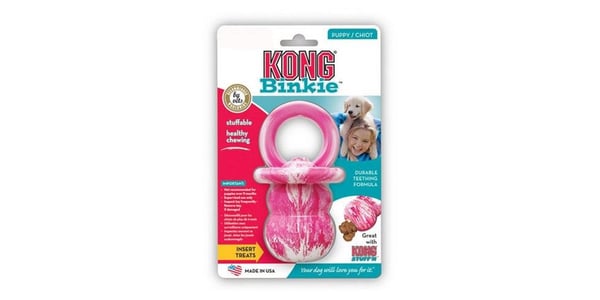
Your puppy's teething stage can be unpleasant. Help them survive this part of their development by offering the best toys to ease their teething aches and pains.
In addition to the discomfort, they are feeling, teething can trigger some destructive and annoying behaviours as they desperately try to soothe their tender mouths. Those baby teeth are razor-sharp, so give them something safe to chew on instead of your fingers.
Tips for Introducing Teething Toys to Puppies
- If your pup doesn’t seem to know what to do with a chews toy, then you’ll want to start by keeping a soft teething toy on hand. When they nip, suck, or whine due to tooth pain, quickly offer the toy.
- Freezing the toys can help to numb the gums and may encourage a sore pup to give the toy a try.
- Try adding a dab of flavour to the toy. Stick to tiny amounts of pet-safe peanut butter or salmon oil, and let them lick it off.
- Practice yelping when they bite you, and immediately offer a toy in place of your tasty digits.
Toy Safety: 3 Things to Consider
When picking a toy for your dog, make sure you consider how the toy will be used and when. Not every toy is suitable to be left with your dog unsupervised. Many puzzle toys, for example, can have small removable pieces that you wouldn’t want your dog ingesting.
Here are some of the most common risks that you should be aware of before giving your doggo a new toy:
1. Choking
Any toy can be a choking risk, which is why it’s so important to choose the right size and types of toys. Bigger is usually safer, so stick to toys that don’t fit entirely in their mouths.
If your dog has a powerful jaw, then they may be able to break off pieces of a toy. Even if they do manage to swallow them safely, the blockage could still end up somewhere in their digestive system.
Always monitor your dog with toys to ensure they enjoy playing with toys safely or stick to large toys that can’t be broken down.
2. Dental health
Although many toys can offer dental benefits, you still need to consider the risk of tooth damage. Hard toys, nylon bones, and many plastic toys can damage their teeth, gums, or tongue.
Many harder toys are not appropriate for puppies, seniors, and dogs with existing dental issues. Even in a completely healthy adult dog, hard toys can still pose a small risk. If you are concerned that your dog could hurt themselves, then stick to softer toys, like those made of rubber, as opposed to nylon, and offer dental chews and treats.
Don't depend solely on chews and toys to clean your dog's teeth and maintain their dental health. Instead perform regular dog toothbrushing.
3. Cleanliness
Dog toys are loaded with germs. Some toys go outside, to the park, and are even played with by other dogs. Those toys can quickly spread bacteria around the house.
Toys should be replaced when they are damaged or soiled beyond repair, but many dog toys can be cleaned to preserve them for longer. Some are even dishwasher safe!
Tips for Cleaning Your Dog’s Toys
Just thinking about how gross dog toys get can make your skin crawl. These quick and dirty tips for keeping your dog’s toys clean should give you some peace of mind.
- Avoid harsh chemicals like bleach when cleaning your dog’s toys. They can leave a residue that is very dangerous for your pets.
- Have strict indoor and outdoor toys. This won’t eliminate bacteria, but it can help to control it.
- Have a consistent rotation of toys. This will allow you to clean them regularly without leaving your dog toyless and will prolong the lifespan of the toy.
- Wet toys should be dried to prevent bacteria growth. After playtime and washing, toys should be left to dry naturally before being returned to your pet or the toy bin.
Check out How to Clean Dog Toys to get some great tips for keeping germs on your dog’s filthy toys from infiltrating your home.
New Dog Toys are Exciting Dog Toys
If your dog hasn’t shown any interest in toys, then chances are you have a stockpile of forgotten dog toys in your house. The last thing you want to do is to add to the island of misfit toys, so before you buy more, try re-introducing their old toys in a new way.
Think outside the box to make a boring old toy fun. It could mean making up new games or even get the dog interested in playing with the toys with them by showing them how it’s done.
Or try getting some of their doggy friends to show them the ropes (and balls and frisbees…you get it). Your dog may be more social than you think. Set up some play dates or look into a daycare program that can help to socialize your pet.
If your lazy couch potato refuses to fetch, then maybe it’s time you turn that tennis ball into a treat-dispensing ball. Perhaps that tired old plush toy could be used for a rousing game of hide-and-seek. Get creative.
Some of the toys may not be stimulating in the right ways, so try to find new shapes, smells, and textures to grab your dog’s attention. Something as simple as the shape of the toy can make a difference in how they are able to play with your dog.
Get in the habit of rotating their toys too. The cycle is up to you, but try to have a few options hidden away that you can swap out occasionally. This will keep their toys new and exciting, but can also extend the life of the toy by giving it a break from your playful dog.
Frequently Asked Questions
Why doesn't my dog like playing with toys?
There could be various reasons for this, including past experiences, personality traits, or health issues. It's essential to understand your dog's preferences and needs.My dog used to love toys, but now they're not interested. Why?
Dogs' preferences can change over time. They might be seeking different types of stimulation or have simply outgrown their old toys.What if my dog is scared of toys?
Some dogs may have had negative experiences with certain toys or find them intimidating.How can I determine which toys my dog likes?
Experiment with a variety of toy types, textures, and sizes. Pay attention to which ones your dog engages with and seems most comfortable playing with.My dog destroys toys quickly. Does this mean they don't like them?
Not necessarily. Some dogs enjoy the challenge of destroying toys. Look for durable or indestructible toys designed for tough chewers.Are there specific breeds or personalities more likely not to like toys?
While individual preferences vary, certain breeds or dogs with specific personality traits may be less interested in toys. Breeds bred for tasks like hunting might be more toy-driven, while others may have different priorities for play.
.png?width=200&height=66&name=logo%20(1).png)


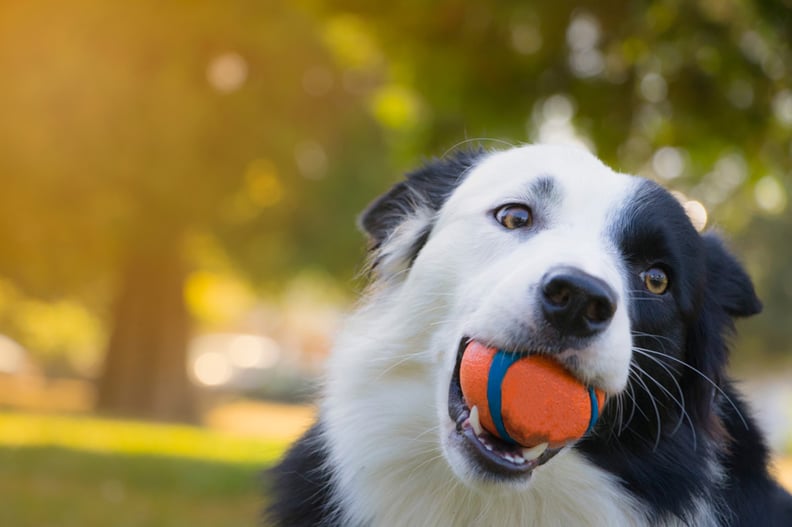

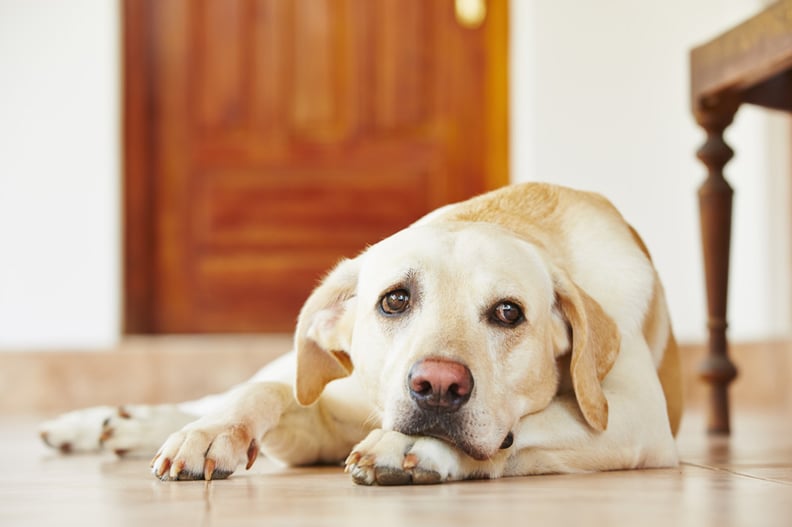
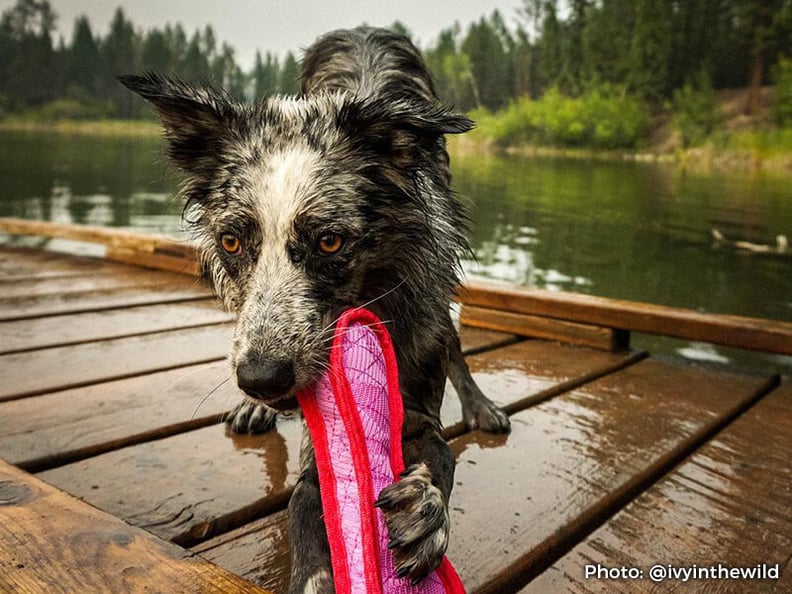
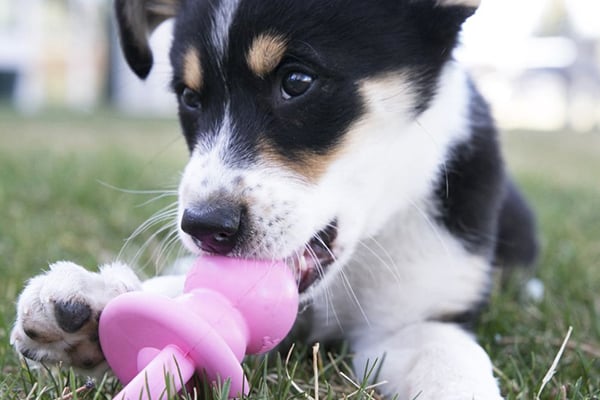

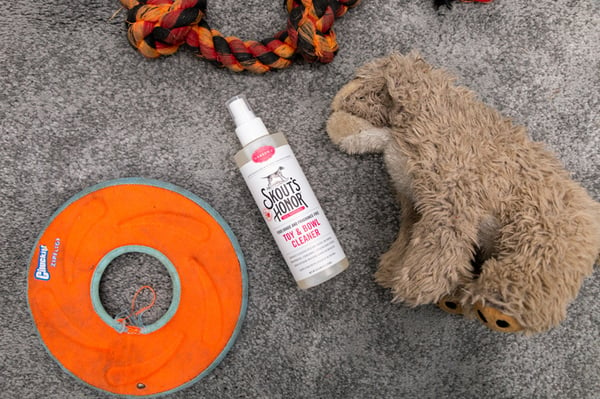


.jpg)
